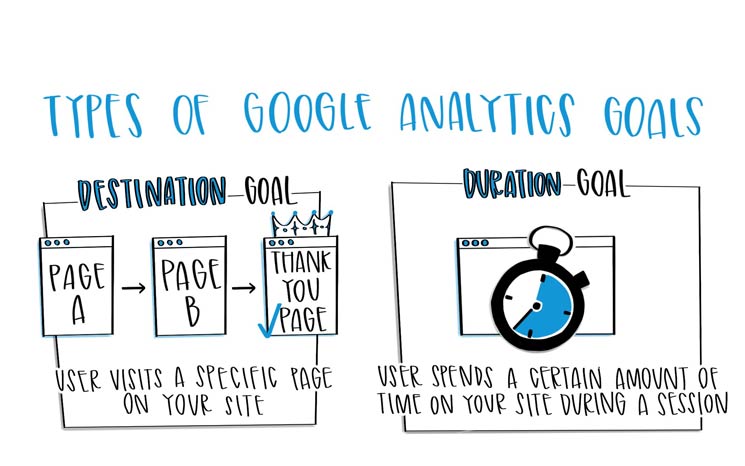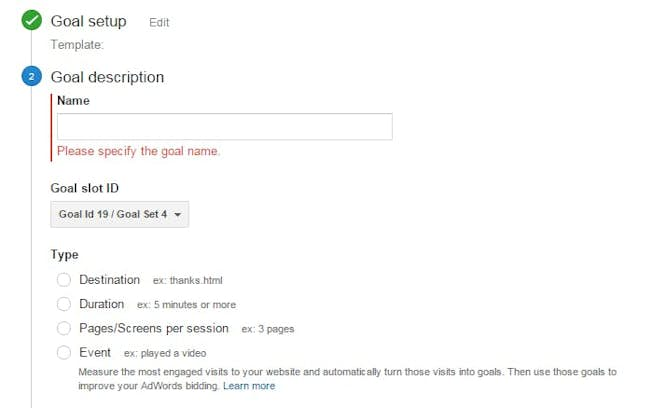What Data Is Google Analytics Goals Unable to Track: Learn the Limitations
What Data Is Google Analytics Goals Unable to Track: Learn the Limitations
Blog Article
Debunking Google Analytics Limitations: Uncover What Data Goals Can not Track
In the world of digital analytics, Google Analytics stands as a powerful tool that gives valuable insights into website performance and individual actions. Among its capabilities, there exist restrictions that usually go undetected. Recognizing what Google Analytics can not track is vital for a comprehensive grasp of data analysis and decision-making processes. From the intricacies of individual interaction with dynamic web content to the intricacies of cross-device user trips, these limitations clarified areas that may continue to be obscured from traditional analytics viewpoints. By untangling these restraints, a clearer image arises, allowing for more educated methods and refined insights right into customer interaction and conversions.

Individual Communication With Dynamic Web Content
Customer communication with dynamic web content plays a crucial function in recognizing user actions on websites and maximizing the total customer experience. Dynamic material describes elements on a website that can change without the requirement for a full web page reload. This consists of interactive aspects such as pop-ups, sliders, types, and videos that react to customer activities in real-time. By tracking user interactions with dynamic material, internet site proprietors can get important understandings into individual engagement, preferences, and habits.
Google Analytics provides various devices to track user communications with vibrant web content, such as event tracking and virtual pageviews. Event tracking allows you to keep an eye on certain user actions, like clicking a switch or enjoying a video clip, giving information on just how customers connect with dynamic components. Online pageviews can be made use of to track communications that do not result in a brand-new web page load, offering a comprehensive sight of individual engagement with vibrant content. By analyzing this information, web site proprietors can make educated decisions to enhance individual experience and drive conversions.
Cross-Device Individual Journeys
How can modern-day analytics devices track the complex courses customers take across multiple gadgets in their online trips? Cross-device user journeys present a substantial obstacle for tracking and examining customer actions accurately. As users connect with applications or websites using numerous devices such as tablets, smart devices, and desktops, it becomes vital to understand just how they relocate between these systems to enhance user experience effectively.
Google Analytics faces constraints in tracking cross-device customer journeys as a result of privacy problems and technical restrictions - what data is google analytics goals unable to track. While it can give insights into specific tools' interactions, tracking a smooth individual trip throughout several devices continues to be a difficulty. This limitation can lead to incomplete data and fragmented individual insights, making it hard for services to develop a unified view of the client journey
To resolve this problem, companies can use advanced analytics tools that supply cross-device monitoring abilities, allowing them to obtain an extra all natural understanding of customer behavior. By leveraging these tools, organizations can link the space in tracking cross-device individual trips and enhance their digital strategies for a seamless customer experience.
Offline Conversions and Attribution
As companies navigate the challenges of tracking cross-device user journeys, another essential element Go Here to take into consideration is the world of offline conversions and attribution in the realm of information analytics. While Google Analytics offers important understandings right into on the internet user actions, it fails when it involves tracking conversions that happen offline. This constraint positions a substantial obstacle for organizations that have both online and offline sales channels.
Offline conversions, such as acquisitions made in physical stores or next through phone call facilities, are important to understanding the full client journey. Without the capability to associate these offline conversions to specific on-line interactions, services may have a hard time to precisely measure the influence of their digital advertising and marketing initiatives.
To resolve this gap, companies can check out alternate solutions such as integrating CRM systems with on-line analytics devices or using one-of-a-kind discount codes that can be mapped back to on the internet projects. By bridging the gap between online and offline information, services can gain a much more detailed understanding of their consumers' actions and enhance their general marketing techniques.
Individual Individual Identification
In the world of data analytics, the capability to accurately identify private users throughout numerous on-line touchpoints is a crucial difficulty for businesses looking for to personalize and maximize their marketing techniques. While Google Analytics provides useful insights right into user habits and communications, it falls short in allowing the identification of specific people because of personal privacy issues and technical limitations. Google Analytics makes use of one-of-a-kind identifiers such as cookies to track customer sessions and behavior, yet these do not correspond to determining individual users in a personal sense.

Data From Secure Pages
Regardless of the raising prevalence of safe and secure web pages on web sites, acquiring information from these encrypted sources presents an unique obstacle for electronic analytics systems like Google Analytics. Safeguard pages, suggested by HTTPS in the link, encrypt information exchanged in between the customer's web browser and the site's web server to guarantee personal privacy and security. While this encryption is essential for securing sensitive details, it also presents limitations for tracking customer behavior and celebration analytics information.
Google Analytics deals with barriers in collecting in-depth info from protected web pages due to the file encryption protocols in position. As a result, certain information points such as recommendation resources, keyword searches, and even some individual interactions might here not be totally captured when individuals access a website via a safe and secure connection. This constraint can affect the precision and efficiency of the data evaluation, leading to spaces in comprehending customer behavior and choices on safe and secure pages.
To browse this challenge, digital analysts might need to check out alternate monitoring approaches or utilize other tools especially developed to collect insights from safe pages. By adapting approaches to accommodate these limitations, businesses can still acquire important analytics despite the restraints provided by encrypted links.
Conclusion
In verdict, Google Analytics has constraints in tracking customer communication with vibrant web content, cross-device customer journeys, offline conversions, specific customer identification, and information from safe and secure pages. In spite of its important understandings, Google Analytics may not supply a complete image of user interaction across numerous touchpoints.
Individual communication with dynamic material plays a critical role in understanding customer behavior on websites and optimizing the general user experience. By tracking user interactions with vibrant content, web site proprietors can acquire important understandings into customer involvement, choices, and behaviors.
Google Analytics utilizes unique identifiers such as cookies to track customer sessions and habits, yet these do not equate to determining individual users in a personal sense.
As a result, particular information points such as referral resources, keyword searches, and even some customer interactions may not be totally recorded when customers access a web site via a secure link.In conclusion, Google Analytics has limitations in tracking customer interaction with vibrant web content, cross-device customer trips, offline conversions, individual customer identification, and information from secure pages.
Report this page